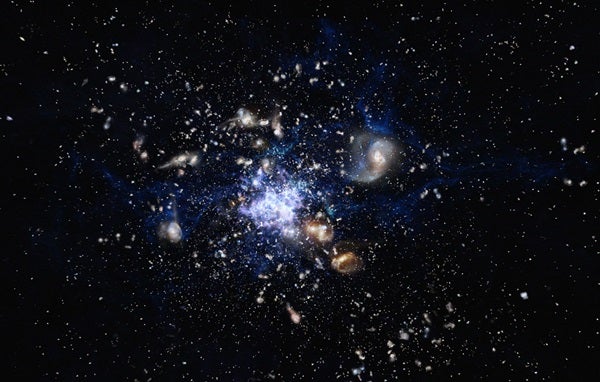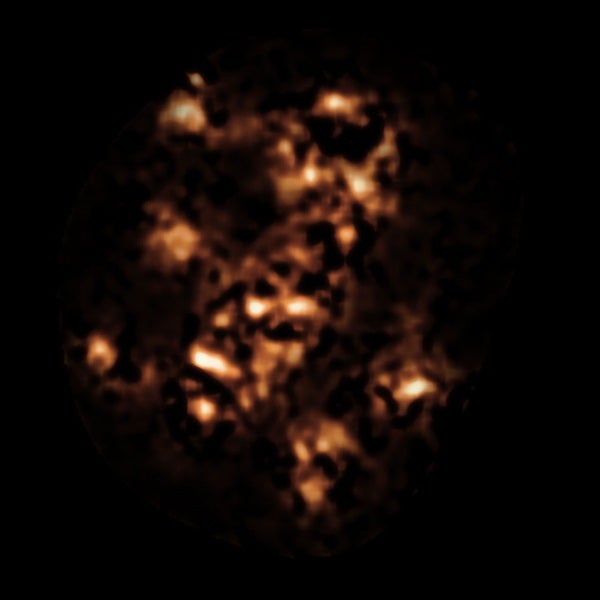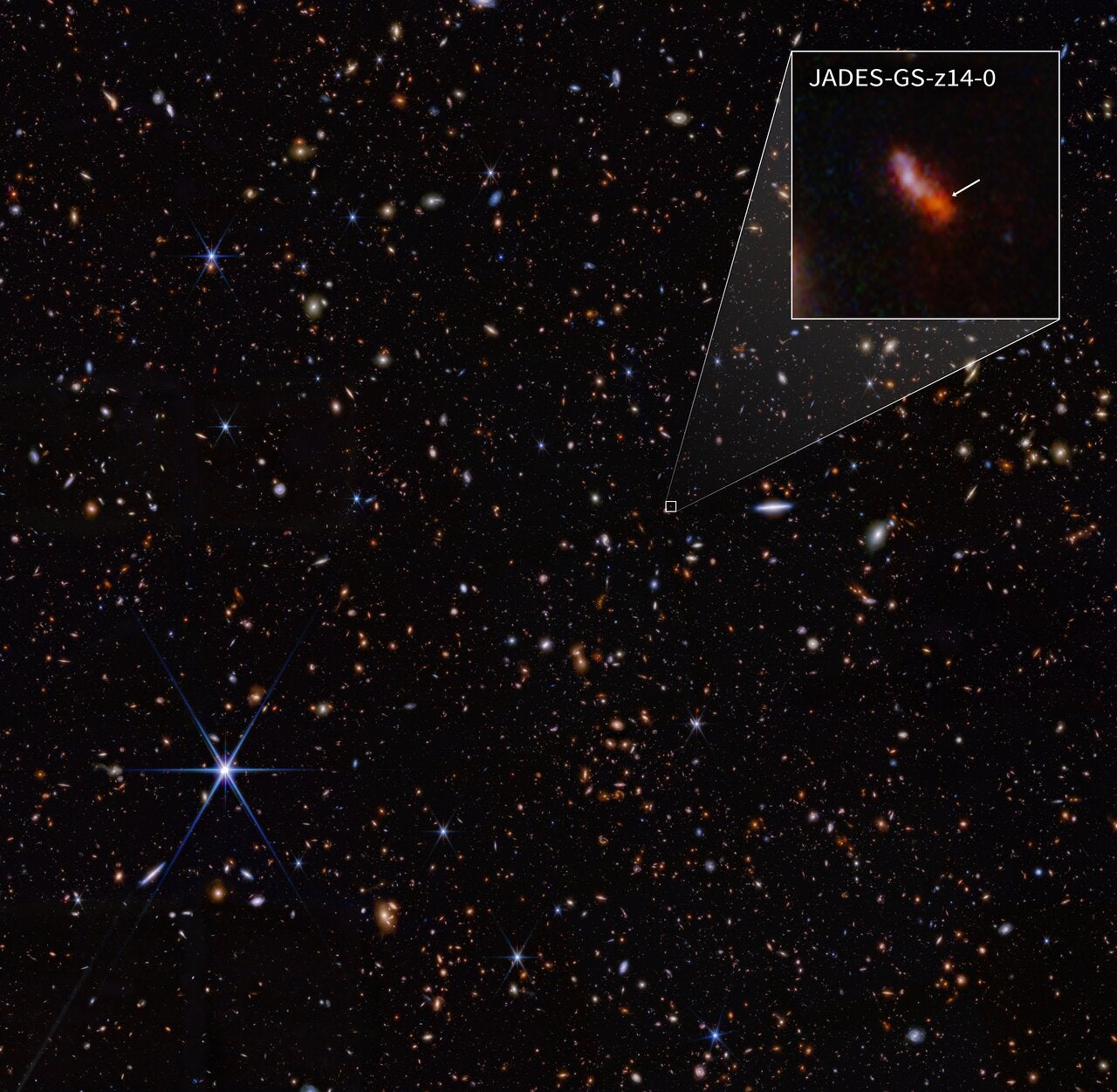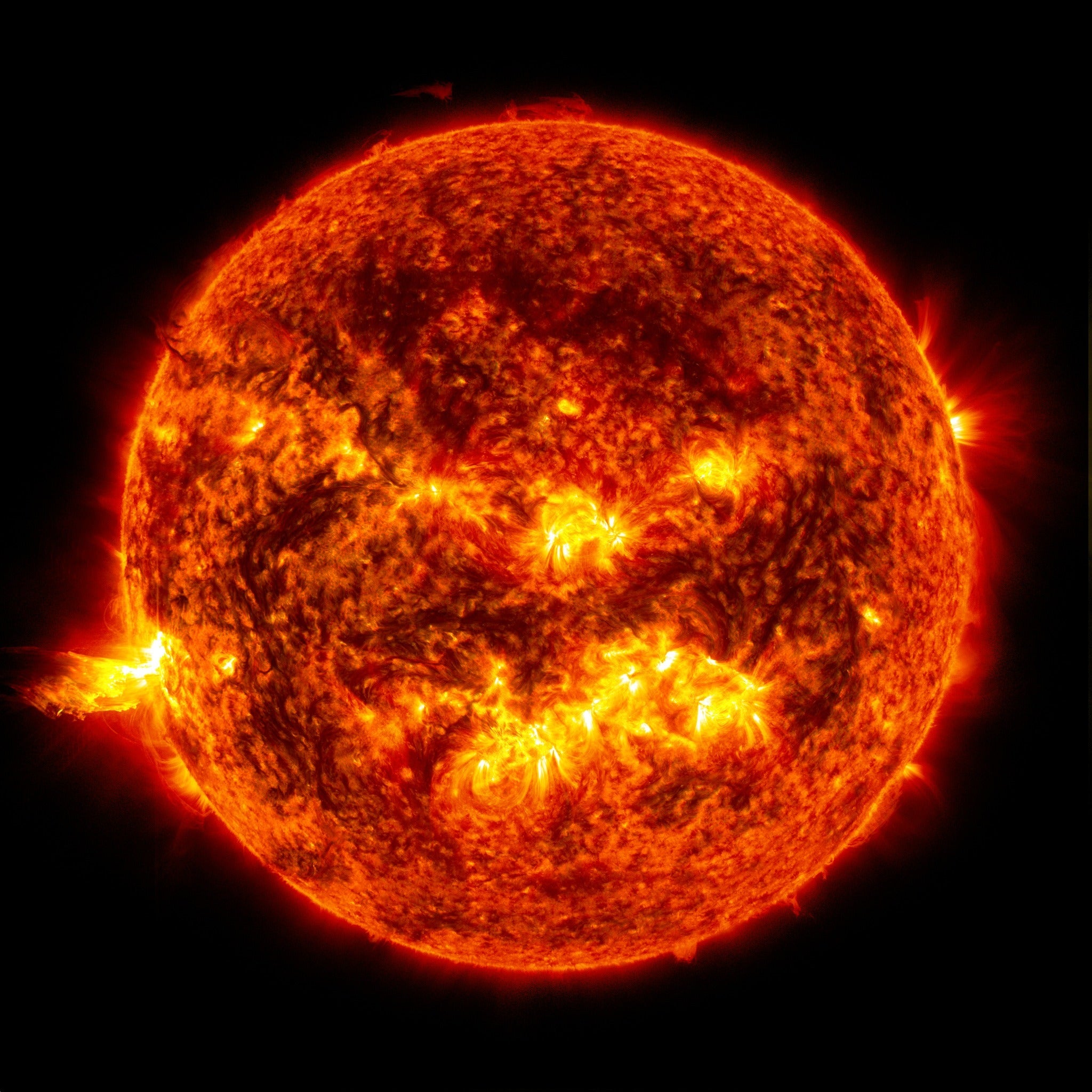Galaxy clusters are the largest objects in the universe held together by gravity, but their formation is not well understood. The Spiderweb Galaxy (formally known as MRC 1138-262) and its surroundings have been studied for 20 years using the European Southern Observatory (ESO) and other telescopes and is thought to be one of the best examples of a protocluster in the process of assembly, more than 10 billion years ago.
But Helmut Dannerbauer of the University of Vienna, Austria, and his team strongly suspected that the story was far from complete. They wanted to probe the dark side of star formation and find out how much of the star formation taking place in the Spiderweb Galaxy Cluster was hidden from view behind dust.
“This is one of the deepest observations ever made with APEX and pushes the technology to its limits — as well as the endurance of the staff working at the high-altitude APEX site, 5,050 meters [16,570 feet] above sea level,” said Carlos De Breuck, APEX project scientist at ESO and a co-author of the new study.
The APEX observations revealed that there were about four times as many sources detected in the area of the Spiderweb compared to the surrounding sky. And by carefully comparing the new data with complementary observations made at different wavelengths, the scientists were able to confirm that many of these sources were at the same distance as the galaxy cluster itself and must be parts of the forming cluster.
“The new APEX observations add the final piece needed to create a complete census of all inhabitants of this mega star city,” Dannerbauer said. “These galaxies are in the process of formation, so, rather like a construction site on Earth, they are very dusty.”
But a surprise awaited the team when they looked at where the newly detected star formation was taking place. They were expecting to find this star formation region on the large filaments connecting galaxies. Instead, they found it concentrated mostly in a single region, and that region is not even centered on the central Spiderweb Galaxy in the protocluster.
“We aimed to find the hidden star formation in the Spiderweb Cluster — and succeeded — but we unearthed a new mystery in the process,” Dannerbauer said. “It was not where we expected! The mega city is developing asymmetrically.”
To continue the story, further observations are needed, and the Atacama Large Millimeter/submillimeter Array will be the perfect instrument to take the next steps and study these dusty regions in far greater detail.











